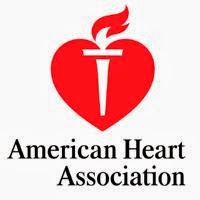Dear Heart Friends:
What has Baby Hearts Press (a.k.a. Anna and Frank Jaworski) been doing for the last decade and a half? We've been publishing books and resources for the congenital heart defect (CHD) community. When the Internet was young in the early 1990s, almost everything we found online about children with congenital heart defects were created by bereaved parents. There were many tributes to heart warriors taken too soon. There wasn't much information online that provided hope to the CHD community.
What was worse was that publishers considered our community "too small" or "niche market" and thus they weren't interested in publishing books to help our community, although they wished us luck and directed us to other publishers who also turned us down. That's how Baby Hearts Press was born. We found a book on self-publishing, started Baby Hearts Press and haven't looked back since. For a long time our books were among the few books that gave parents information on a level just about anyone with a high school education could read and understand, but more importantly, the books provided real stories that hadn't been "Hollywood-ized" and instead were told by real people affected by CHDs in their own words -- the words of grandparents, parents and adult survivors.
Now everything has changed. The world is much faster paced. There are many, many pages of hope on the Internet for CHD families, supporters and survivors. Hospitals provide all kinds of information for the CHD community, some even provide videos or beautiful 3-D graphics which help to explain heart defects which seemed incomprehensible before. Big publishers have started taking notice of our growing community and there are textbooks and other books that are now available which paint a picture of hope for everyone.
Our son, Alexander, has also grown up. So we found ourselves at a crossroads and then we received a phone call that would change our lives. The call was from Josh Bernstein, an Executive Producer with VoiceAmerica. After having seen Anna's websites on the Internet, he called to offer Anna her own radio show -- a show specifically for the CHD community. This would be a chance for us to continue our community outreach and it would also be an opportunity to share our books with the CHD community.
Anna just got back from Phoenix, Arizona where she met her VoiceAmerica team! Here is a photo of her with Josh and Brandy Jackson, General Manager of Voice America.
Unfortunately, Anna didn't get photos with all of the members of her team, but here is her Trainer and Sound Engineer for Episode 2 and 3. The Trainer was Randy Jackman and his brother, Justin was Anna's Sound Engineer.
Justin, Anna and Randy
Perhaps the most exciting part of the trip, aside from meeting all of the wonderful people who make VoiceAmerica what it is, was the fact that Anna actually taped the first 3 Episodes of Heart to Heart with Anna. Here is a photo of Anna in the studio after her first Episode was complete.
Thanks to the generous support of the CHD community, Anna had 12 Guests on the first 3 shows which will begin airing on Tuesday, November 12, 2013 at 2:00 p.m. Central Time. The first three Episodes and Guests are:
Episode #1: You Are Not Alone with Guests: Nancy and Jesse McCain, Callie Rickard and Carl Wolford
Episode #2: Post Traumatic Stress Disorder, Anxiety and Survivor's Guilt in the CHD Community with Guests: Lauren Bednarz, Yasmin Southwood and Bryce Bagwill
Episode #3: Organ Donation and Transplantation with Guests: Eileen Pearlman, Jessica Cowin, Emily Wiebke, Kathy Keller and Anthony Pugliese
All of the Guests did an excellent job of providing information and sharing their experiences with the listening audience. Here's how powerful their stories were -- after Episode #1 was completed one of the VoiceAmerica employees found Anna eating some soup in the kitchen and proceeded to tell her that he'd heard about the show we'd just completed. He went on to share that his niece was born with a serious heart defect and needed surgery in her first days of life. He couldn't wait to tell his brother about the show because he wanted him to know that he was not alone.
We haven't even aired but we have already touched someone's life. Now you see the new direction Baby Hearts Press is taking. We hope you'll join us! Please LIKE us on Facebook!
Heart to Heart with Anna If you'd like to receive an eCard about the show, please send Anna an email at Anna@BabyHeartsPress.com and give her your preferred email address.
We are looking forward to hearing from you all soon!
(The front door of VoiceAmerica, a.k.a. World Talk Radio)
Please visit Baby Hearts Press at http://www.babyheartspress.com for resources for the congenital heart defect community.






































